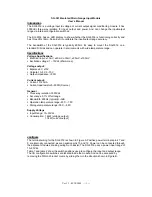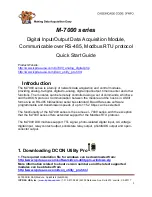
ENUK - V1.4 - 25/01/17
26
4000 Series GSM Audio Intercom - Technical Manual
4000 Series GSM Audio Intercom with Proximity
General Directions for Installation
CONNECTION TO MAINS, SAFETY AND GUIDANCE NOTES
IMPORTANT: PLEASE READ THESE INSTRUCTIONS CAREFULLY BEFORE COMMENCING WITH THE INSTALLATION.
Videx recommends that any cabling and Videx product be installed by a competent and qualified electrician, security installation
speclialist or communications engineer.
• DO NOT
install any Videx product in areas where the following may be present or occur:
• Excessive oil or a grease laden atmosphere.
• Corrosive or flammable gases, liquids or vapours.
• Possible obstructions which would prevent or hinder the access and/or removal of the Videx product.
MAINS CONNECTION
The system
MUST
be installed in accordance with the current I.E.E regulations (in particular
I.E.E. Wiring regulations BS7671
), or the
appropriate standards of your country, in particular Videx recommends:
• Connecting the system to the mains through an all-pole circuit breaker (refer to
Fig.29
) which shall have contact separation
of at least 3mm in each pole and shall disconnect all poles simultaneously.
• That the all-pole circuit breaker shall be placed in such a way to allow for easy access and the switch shall remain readily
operable.
• Ensuring that the mains supply (Voltage, Frequency and Phase) complies with the product rating label.
• Isolating the mains before carrying out any maintenance work on the system.
FUSE
N
L
Mains
1 PHASE SUPPLY
(220 - 240Vac, 50/60Hz)
SWITCHED FUSE SPUR
Fig. 29
POWER SUPPLY INSTALLATION
Follow the steps below when fitting the Art.324 power supply.
• First remove the terminal side covers by unscrewing the retaining screws.
• Fix the power supply to a DIN rail (following
Fig.30
,
Fig.31
and
Fig.32
).
• Switch OFF the mains using the circuit breaker (mentioned previously) and then make the connections as shown on the
installation diagrams.
• Check the connections and secure the wires into the terminals ensuring that the low voltage (signal) cables are routed
separately from the high voltage (mains) cables.
• Replace the terminal covers and fix them back into place using the relevant screws.
• When all connections are made restore the mains supply.
















































